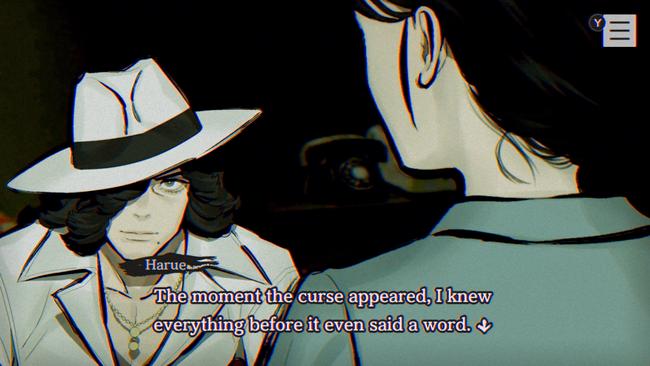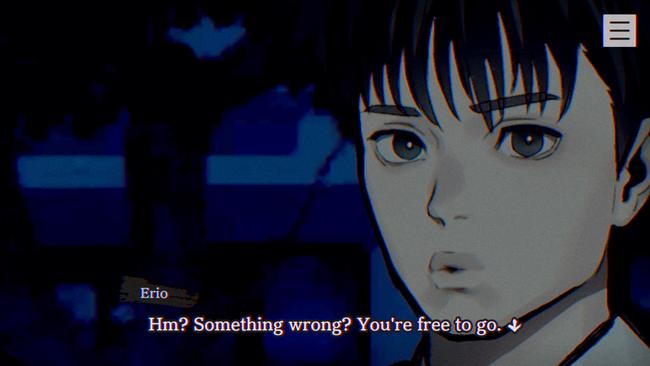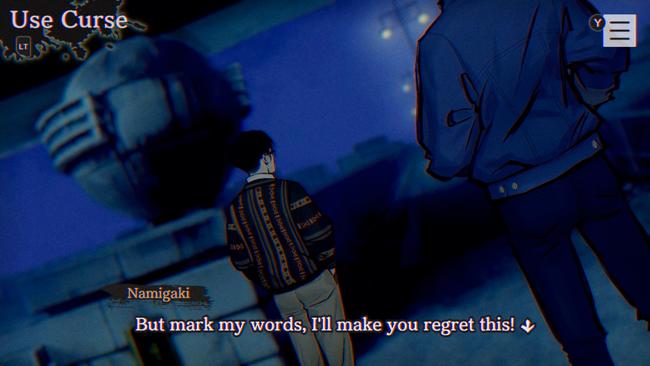
Paranormasight Interview - talking overseas reception, development stories, and the pout with the creative staff
Back in early March, Square Enix released Paranormasight: The Seven Mysteries of Honjo, a horror mystery-adventure game that caught the world by surprise. Since then, the title has been met with a lot of positive reception through its reviews and word-of-mouth from players globally. Paranormasight currently has a Very Positive review rating on Steam with recent reviews and the stellar Overwhelmingly Positive label throughout all the reviews that have been submitted since its launch at the time of publishing this interview.
I also reviewed Paranormasight for RPG Site and quite frankly, I had no idea what to expect. Long story short, I loved it!
My ongoing fascination with Paranormasight brings me here today to proudly present an amazing opportunity that was given to us at RPG Site. We sat down with Paranormasight's director & writer Takanari Ishiyama, music composer Hidenori Iwasaki, character designer Gen Kobayashi, and producer Kazuma Oushu to learn more about the development of this awesome horror mystery-adventure, their reactions to the positive feedback from the overseas audience, and addressing some of the burning questions that the western community has had on their minds.

Thank you for taking the time to speak with us, Mr. Ishiyama, Mr. Iwasaki, Mr. Kobayashi, and Mr. Oushu. We appreciate the opportunity to speak with you about Paranormasight: The Seven Mysteries of Honjo and we have some questions we’d love to hear all of your insight on.
- RPG Site: Mr. Ishiyama, what inspired you to create Paranormasight: The Seven Mysteries of Honjo? How did you arrive at the concept of making it a horror adventure title? Were there any significant challenges you faced early on when writing the script for it?
Ishiyama (director & writer): I was aware that this project would be subject to many restrictions from the early stages of planning, so decided that in order to create a high-quality title it would be best for it to be an adventure game, given my experience with the genre. We went with horror because I thought it would be most suited for livestreams and incorporated “The Seven Mysteries of Honjo” from Sumida City, Tokyo, as a subject as I felt basing the project on existing folklore would make it more realistic. The first challenge in writing the script was thinking of how to incorporate big surprises that take advantage of the video game medium.
- RPG Site: Are any of you a fan of real life occultism? Do you believe in ghosts, spirits, or the supernatural in general? Are there any myths or legends that you’re especially fond of?
Ishiyama: My stance on the occult is that it would be interesting if it were true. Basically, I see it as fiction that was triggered by a real-life event, and enjoy it with that awareness. It’s evident from the fact that things like "seven mysteries", "ghosts", and "ghost stories" continue to be passed down to this day in various parts of Japan, that mysterious things have an appeal that captures and takes ahold of people’s hearts!
Kobayashi (character designer): I love the occult, and when I was younger, I used to go out with friends to haunted places to see ghosts. Although I’ve rarely had any actual mysterious encounters, I still love to hear stories about such experiences.
Oushu (producer): When I was a child, I enjoyed watching occult TV shows and variety shows about haunted places because they were often on air. I’ve had my own mysterious experiences, so I tend to be a believer. In Japan, there are many different folklores and ghost stories from all over the country that are told to this day, and even ghost stories that are similar have differences depending on the region, making for a lot of unique and interesting tales.
- RPG Site: Mr. Kobayashi, many RPG communities in the west have recently praised you for your character design work on NEO: The World Ends with You. Unlike NEO: The World Ends with You which takes place in the modern day, Paranormasight: The Seven Mysteries of Honjo is set during an earlier time period - around the 80’s.
Tell us about your approach in designing the cast of Paranormasight during development. I’d especially like to know more about the pouting expression that the characters commonly express where they purse their lips together. Many western players have expressed their amusement with it and would like to know more.

Kobayashi: For Paranormasight, I was tasked with designing realistic characters from the 80s, so I didn’t aim for anything eccentric, working instead to create ordinary people incorporating the fashion and such from that time period. However, that alone would have resulted in a lack of individuality, so I was conscious of giving each character a distinct personality through facial expressions and poses.
As for the "pursed lips", a pouting face was one of the options I included when creating a range of expressions for the characters. Ishiyama may have taken a liking to this, as it ended up being used in a variety of scenes.
- RPG Site: Let’s talk about the distinct, various musical styles in Paranormasight: The Seven Mysteries of Honjo, Mr. Iwasaki. I loved the game’s soundtrack and appreciated that not all the music was eerie and scary, despite being a horror adventure title. Some of them are upbeat, cheery, and fun to balance out the overall atmosphere.
Can you share with us some of your thoughts when working on Paranormasight's music? What were some of the things you thought about when you learned more about the project? What makes working on Paranormasight, an adventure game, different from RPGs like Stranger of Paradise: Final Fantasy Origin, Final Fantasy XI, and the Front Mission series?
Iwasaki (music composer): I’m glad you enjoyed the soundtrack. The following are some of the things I kept in mind.
(1) Scatter synthesizer sounds throughout that would make players feel scared or uneasy just by listening to them, in order to convey the horror-mystery world
(2) Incorporate the essence of the music from the late Showa Period (the 1980s)
(3) Use easy-to-understand melodies that appeal to emotions
(4) Above all, give top priority to the director's wishes (this is important)
As for (3), information was not as easily accessible as it is today with the Internet, so I think for better or for worse, people had a lot of misconceptions, assumptions, and emotional fervor. I approached composing the music wanting to convey the emotions of those living in that era.
When I first learned about the details of this project, I was very interested because it was a game in a genre I had never worked on before. Producer Oushu, who I worked with on Imperial SaGa: Eclipse, was the one who invited me to join the project, and I wanted to make sure I lived up to his expectations.
The difference between RPG music and that of other games is that RPGs have many standard tracks in place for moments like "enemy battles", "mid-boss battles", and "victory jingles”. Paranormasight doesn’t have these standard situations, so I started by thinking about what kind of music would match the game, one song at a time. But that was the most interesting part.
- RPG Site: One aspect of Paranormasight: The Seven Mysteries of Honjo that I liked is that it was a horror game that even people who don’t normally play horror games can enjoy. I’m not great with horror games either, yet Paranormasight managed to strike a good balance between being scary - but not too scary.
A lot of people who have played it in the west seem to share this similar sentiment. Was this always the intent during the development of Paranormasight? Were there any early prototypes that were much scarier and leaned on the horror element more?
Ishiyama: Actually, I’m not very good with horror myself! (laugh) I decided at the beginning that the horror element would be an added “spice”, and the story itself would hinge on it being a mystery in which players uncover secrets to reveal the mastermind behind it all. I thought it was important for a new title to have a “hook” at the beginning, so I intentionally included a horror element using the omnidirectional camera at the start of the game, then set things up so that from the mid-point on you advance by solving problems at multiple sites. This might be why players were left with the impression you described.
- RPG Site: An element of Paranormasight: The Seven Mysteries of Honjo that distinguishes it from other adventure titles is the 360-degree rotational view of the camera. It allows players to fully view their surroundings at many points in the game. This is accompanied with the background scenery being real-life photographs overlaid with visual filters to fit the style of the game.
Many players often experience being caught by surprise or startled when a character suddenly pops up near them when they scroll through the environment. Tell us about the decision to include these features and a bit about the process of implementing them into the game. Were there any unexpected obstacles you faced in including them?
Ishiyama: We utilized a panoramic background despite this being a 2D adventure game, as it worked to enhance the feel that you are actually at that location. We were also able to incorporate gimmicks that took advantage of players being in control of looking around, and creating a sense of depth through composition enriched the camerawork as well. Of course, with today's technology, it would be possible to create a 3D model of the entire background and allow the player to freely walk around in a photo-realistic space, but if we had done so, we would not have been able to offer this product at this price.
To create the panoramic backgrounds, we took material taken on location using an omnidirectional camera as well as images captured using rough 3D models of things like imaginary room interiors, touched them up for a more “illustrated” look, and made adjustments to ensure everything matched the time period (thinning out buildings, aging/distressing, adding power lines, etc.). Since the perspective in a 360-degree panoramic image is very different from that of a normal picture, retouching was quite difficult, but the background art designer worked hard and did a great job.

- RPG Site: There are several moments in Paranormasight: The Seven Mysteries of Honjo that break the fourth wall and directly incorporate the players into the story, such as having to turn the volume slider down to 0 to counteract Yutaro Namigaki’s Curse Stone or having to save the game to keep Michiyo Shiraishi in Yakko Sakazaki’s memory before saying farewell to her for the final time.
What inspired including these types of moments that break the fourth wall that require players to directly engage with the story themselves? Were there more of these segments initially planned during development, or was the goal always to have a few of them to heighten their effectiveness?
Ishiyama: Nowadays there are many works that incorporate metafictional effects that break the fourth wall, but they still have a certain impact, and there seems to be users all over the world who enjoy it. I like it too. So, I intended to incorporate such gimmicks in this title from the get-go. However, since metafictional effects themselves are no longer rare, I felt it was necessary to give them a meaning that was unique to this work.
We took advantage of this and made it look like a metafiction, when in fact there would be role-playing involved, wherein players would be acting out the roles of the characters! We decided at the start that this would be the "big surprise" presented with the first question. The voice volume and the manual save gimmick were implemented for the purpose of foreshadowing this, and since the game is not about meta mystery-solving, we settled on this level of balance. The other game I like that incorporates fourth wall-breaking is my own previous work, Schoolgirl Strikers. The camerawork as well as unexpected elements showing up on screen surprised many users and was well received.
- RPG Site: At its core, Paranormasight: The Seven Mysteries of Honjo is a story that slowly unravels and explores the different bonds between several important characters. Several of these include the investigation Yakko Sakazaki pursues to seek the truth behind her beloved friend’s suicide, the grief Harue Shigima suffers due to the circumstances of her late son’s passing, the lengths Tetsuo Tsutsumi goes to protect his daughter’s innocence, and the final revelation unveiled between Shogo Okiie and Yoko Fukunaga.
When directing and writing the script for Paranormasight, what sorts of motifs did you want to convey to the players as they progressed through it? Were there any events from your own life or career that inspired certain sequences or moments in it? Was there a certain message you wanted players to come away with, after they completed the game?
Ishiyama: We felt that merely working to reveal the secrets of the Seven Mysteries was not enough to propel the story forward. Therefore, we added a powerful impetus in the form of “The Rite of Resurrection” to create a situation in which characters burdened with complex reasons to seek this thing out would be pit against each other. I believe that it is the clash of strong feelings between people that creates drama with an emotional impact. I wrote the game with this intention, so it’s truly a genuine piece of entertainment where I wanted to convey a dramatic story with an emotional impact (and surprises and excitement).
I don't think I’m the type to make stories that strongly reflect a social message or something about my personal life or career (although, of course these things do have some influence). Therefore, what I want people to feel after completing the game is, "That was fun! It was exciting! I want to play more of this series!”.
- RPG Site: I realized that it was difficult to choose a favorite character after finishing Paranormasight. I enjoyed so many of them and many players feel the same way. In the end, I think it has to be Mio, Ayame, or Richter for me.
How about you all? Who were your favorite characters in Paranormasight and why?
Ishiyama: Thank you! Strong-willed characters are so fascinating, aren’t they? Of course, every single one of them is my favorite, but this time I'm going to choose Hideki Araishi this time. The reason is because nobody talks about this ordinary, greedy middle-aged guy existing among a lineup of unique characters, and I find that endearing.
Kobayashi: My favorite is Madame Harue. I like women with a dark side, and the fact that she had the strongest feelings out of anyone else. I naturally put a lot of effort into drawing her facial expressions. I may have put a little too much effort into it.
Oushu: It’s difficult to choose a favorite character, as they’re all unique in their own way, but I think Hitomi Okuda is the one who gives me the greatest sense of the historical background of Japan during the late Showa Period. Her hair style and the way she wears her sailor uniform, which was popular at the time, give me a sense of the Showa Period fashions that don’t exist in modern times.
Iwasaki: I like them all because they’re all so human, but I felt a keen sense of Showa Period melancholia from characters like Madame, Richter, and Yakko-chan.
- RPG Site: Thank you so much for your time, Mr. Ishyama, Mr. Iwasaki, Mr. Kobayashi, and Mr. Oushu. We greatly appreciate this opportunity to speak with you and congratulations on the release of Paranormasight: The Seven Mysteries of Honjo. Before we end our time here with you, do you have a final message for the fans of the game?
Ishiyama: We’re very happy to be able to bring this work to English-speaking territories, and that people found this obscure game and gave it such high praise! It was well worth all the hard work of localizing it! If you enjoyed it, please recommend Paranormasight to your friends and on social media! We believe the power of your support will enable us to expand in new ways!
Kobayashi: Thank you for playing Paranormasight. The project team members are eager to create the next installment, so it would be amazing if you could introduce this game to friends who haven’t played it yet.
Oushu: I’m so grateful that so many people have played this game. I was worried about whether the unique Japanese culture and historical background would be accepted by people overseas, but I’m relieved to see everyone’s comments. It would be great if you could recommend the game to your friends and acquaintances! And it makes us so happy to receive your comments and encouragement through streams and social media. Your continued support is very much appreciated.
Iwasaki: Thank you as well. It looks like many people have left positive comments on social media, saying they enjoyed the game. As one of the developers, I couldn't be happier. To be honest, I didn’t have the overseas market in mind at all (since the game is set in Sumida City in the Showa era, I thought it was only for the domestic market), so I was surprised by the response from overseas. If you haven't played yet, why not take a little peek at Japan from an earlier time period? You may find some unexpected discoveries or find some familiar things.